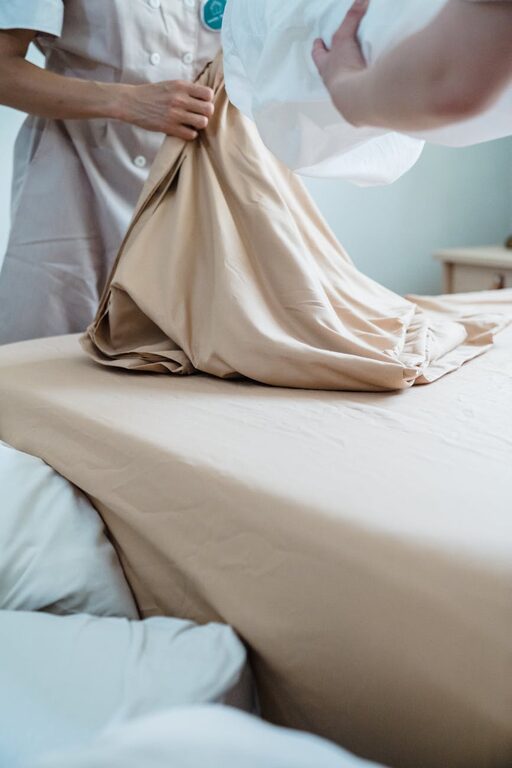Taking good care of your bedding not only ensures a comfortable night’s sleep but also extends the life of your sheets, pillowcases, mattress, and blankets. Many people overlook the importance of rotating and properly maintaining bedding, which can lead to uneven wear, fading, and loss of softness. In this post, we’ll guide you through practical ways to rotate and care for your bedding so that it stays fresh and comfortable season after season.
Why Rotating Bedding Matters
Over time, bedding materials experience wear and tear from regular use and washing. Rotating your bedding means alternating which sets you use and swapping positions for mattresses and pillows. This prevents:
– Uneven wear and thinning of fabric
– Development of body impressions on mattresses and pillows
– Build-up of dirt and sweat concentrated in one area
By rotating and maintaining your bedding, you ensure everything wears evenly and stays comfortable longer.
How Often Should You Rotate Bedding?
To keep bedding in good condition, we recommend:
– Sheets and pillowcases: Change and wash once every 1-2 weeks. Rotate between at least 2 or 3 sets weekly.
– Mattresses: Rotate every 3 to 6 months. Some mattresses can also be flipped, but check manufacturer guidelines.
– Pillows: Rotate or fluff pillows daily, and replace every 1-2 years.
– Blankets and comforters: Rotate seasonally or monthly, washing every few months depending on use.
Regular rotation creates even wear patterns and reduces prolonged strain on any one item.
Step 1: Rotating and Flipping Your Mattress
Mattresses often develop body impressions, making sleep less comfortable. Here’s how to properly rotate and flip if possible:
Flipping
– Some mattresses are double-sided and can be flipped head-to-foot.
– Flip the mattress over 180 degrees so the side on the bottom goes on top.
– This evens out wear and softens pressure points.
Rotating
– Rotate the mattress 180 degrees so the head area is now at the foot of the bed.
– Helps counteract impressions and sagging.
Tip: Mark the mattress corners with tape to remember orientation. Check your mattress warranty or care instructions to see if flipping is advised.
Step 2: Rotating and Washing Sheets and Pillowcases
Sheets and pillowcases face daily wear from skin oils, sweat, and hair products. Rotating between multiple sets keeps them fresher longer.
Rotation Routine
– Have at least 2-3 sheet sets.
– Use one set for 1-2 weeks, then switch.
– Wash used sheets in warm water with mild detergent.
– Dry thoroughly on medium heat or air dry to avoid shrinking.
Washing Tips
– Avoid bleach, which can weaken fibers.
– Use fabric softener sparingly to maintain breathability.
– Ironing sheets is optional but can make them softer.
Step 3: Caring for Pillows
Pillows can harbor dust mites and allergens, so care is essential.
Daily Care
– Fluff pillows every morning to redistribute filling.
– Rotate head to foot weekly for even use.
Washing
– Check pillow tags for washing instructions.
– Most synthetic pillows can be machine washed every 3-6 months.
– Down or feather pillows may need professional cleaning.
– Dry completely to avoid mold growth.
Step 4: Maintaining Blankets and Comforters
Comforters and blankets add warmth but can accumulate dirt and oils.
Rotation
– Rotate blankets and comforters seasonally or monthly.
– Let them air out regularly by hanging outside on a sunny day.
Washing
– Follow care labels closely; some may require dry cleaning.
– Wash comforters every 3-6 months if used regularly.
– Use a large-capacity washer to prevent clumping filling.
Additional Bedding Care Tips
– Use mattress protectors to guard against spills, dust, and allergens.
– Keep pets off the bed to reduce dirt and hair.
– Avoid eating in bed to prevent stains and crumbs.
– Store sheets in a dry, cool place when not in use.
– Sunlight can bleach and fade colors, so dry bedding indoors or in shade when possible.
Signs Your Bedding Needs Replacing
No matter how well you care for bedding, they eventually wear out. Replace items if you notice:
– Thin, worn fabric or holes in sheets
– Mattresses sagging or lumpy with no improvement after rotating
– Pillows that don’t fluff back or cause neck pain
– Persistent odors even after washing
– Allergic symptoms worsening due to dust mite buildup
Regular rotation and care maximize bedding life but don’t delay replacements when needed for health and comfort.
Summary
Properly rotating and caring for your bedding helps maintain its comfort, freshness, and durability. By rotating mattresses and pillows, washing and swapping sheets regularly, and following simple washing and drying tips, you create a clean, cozy sleep environment. These small efforts lead to better sleep quality and help you avoid frequent replacements. Start your bedding care routine today and enjoy nights of restful, fresh comfort!

